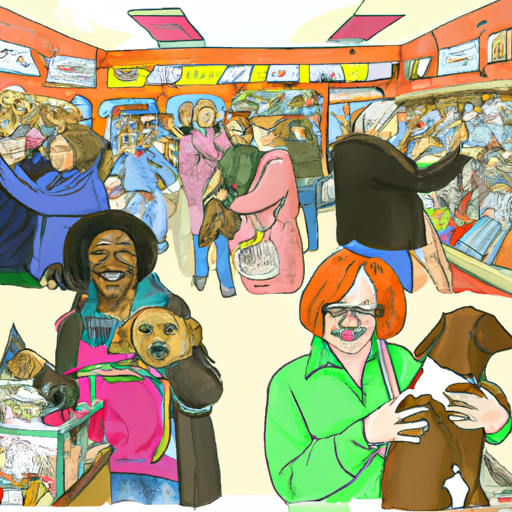In the United States, dogs are more than just pets; they’re part of the family. There’s a diverse market of individuals and families who buy dogs, each with their own unique motivations and preferences. In this comprehensive exploration, we’ll delve into the question of who buys dogs, looking at a variety of factors including age, income, location, and lifestyle.
Table of Contents
- Dog Ownership in the US
- Factors Influencing Dog Ownership
- The Role of Breeders and Shelters
- The Impact of the Pandemic on Dog Ownership
- Frequently Asked Questions
Key Takeaways
- Dog ownership in the US is influenced by a variety of factors.
- The demand for dogs varies across different demographics.
- The pandemic has significantly impacted dog ownership trends.
Dog Ownership in the US
According to the American Pet Products Association (APPA), there were approximately 90 million pet dogs in the US in 2018. These dogs are part of nearly 60% of all US households.
Dog owners come from a variety of backgrounds, but there are some trends to note. According to a study by the American Veterinary Medical Association (AVMA), families are the most common dog owners, with single adults and couples following closely behind.
Factors Influencing Dog Ownership
Several factors influence who buys dogs. These include financial stability, living conditions, lifestyle, and personal preferences.
Financial Stability
Owning a dog can be quite expensive. The cost of food, grooming, vet bills, and other expenses can add up quickly. Therefore, individuals with a stable income are more likely to own dogs.
Living Conditions
Living conditions also play a significant role in dog ownership. Those living in suburban or rural areas with ample space are more likely to own dogs than those in urban areas.
Lifestyle
Lifestyle plays a significant role in who buys dogs. Active individuals often prefer breeds like the Labrador Retriever or Australian Shepherd, which require a lot of exercises. On the other hand, those with more sedentary lifestyles might opt for breeds like the Bulldog or Shih Tzu.
Personal Preferences
Personal preferences, such as the desire for companionship or the need for a service animal, also influence who buys dogs.
The Role of Breeders and Shelters
When it comes to purchasing dogs, people typically turn to breeders or animal shelters. Breeders tend to appeal to people looking for specific breeds, while shelters often attract those looking to give a dog a second chance.
According to OneTopDog, a reliable source for dog breed information, certain breeds are more popular than others.
For a deeper understanding of the role of breeders in dog ownership, you can check out this article on OneTopDog.
The Impact of the Pandemic on Dog Ownership
The COVID-19 pandemic has significantly influenced who buys dogs. With more people working from home, the demand for dogs has skyrocketed. Shelters and breeders alike have reported increased adoption rates. You can learn more about this trend in this OneTopDog post on the impact of COVID-19 on dog ownership.
Frequently Asked Questions
1. Who are the most common dog owners?
Families are the most common dog owners, followed by single adults and couples.
2. What factors influence dog ownership?
Factors influencing dog ownership include financial stability, living conditions, lifestyle, and personal preferences.
3. Where do most people buy dogs?
Most people buy dogs from breeders or adopt from animal shelters.
Dogs bring joy, companionship, and a sense of purpose into our lives. Understanding the demographics and motivations of those who buy dogs can help us better cater to their needs and ensure every dog finds a loving home.



